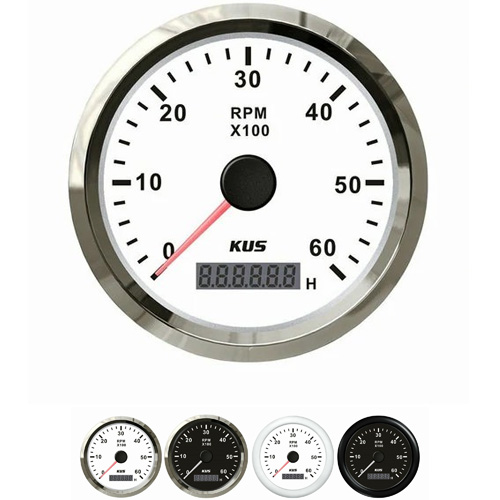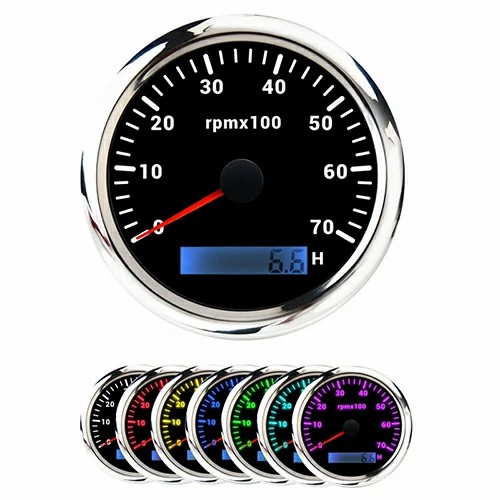magnetic pickup tachometer kit
Our Tachometer can be equipped with a magnetoelectric speed sensor. The engine speed sensor is one of the important sensors. The function of the engine speed sensor is to detect the engine speed, the top dead center signal of the piston, and the crankshaft angle signal. The engine speed sensor can be divided into three types based on the principle of signal generation by the sensor: magnetic induction, photoelectric, and Hall type. The electromagnetic induction speed sensor can be divided into two wire or three wire systems. The magnetoelectric speed sensor is based on the basic principle of magnetoelectric induction to achieve speed measurement. The magnetoelectric speed sensor is composed of iron core, magnetic steel, induction coil and other components.
When the measuring object rotates, the coil of the speed sensor will generate magnetic lines of force, and the gear rotation will cut the magnetic lines of force. The magnetic circuit generates electromotive force in the induction coil due to changes in magnetic resistance. The voltage generated by the induced electromotive force of a magnetoelectric speed sensor is related to the speed of the measured object. The faster the speed of the measured object, the greater the output voltage, which is proportional to the speed. However, when the rotational speed of the measured object exceeds the measurement range of the magnetoelectric speed sensor, the magnetic circuit loss will be too large, making the output potential full or even sharply reduced. Magnetoelectric speed sensors are generally used in conjunction with this wheel. When each emitted magnetic rotation is turned to the sensor position, the magnetic resistance of the sensor's magnetic circuit decreases, and the sensor responds.
The structure and working principle of the input shaft speed sensor are the same as those of the vehicle speed sensor. It is installed on the input shaft of a planetary gear transmission or on the housing near the clutch hub connected to the input shaft for detecting the input shaft speed. And send the signal to the computer. Enable the computer to more accurately control the gear shifting process. In addition, the computer compares this signal with the engine speed signal from the automatic engine control system to calculate the transmission ratio of the torque converter, further optimizing the oil pressure control process and the lock up clutch control process, in order to improve the shifting feeling and improve the driving performance of the car.
 English
English 



Get a Quote / Info